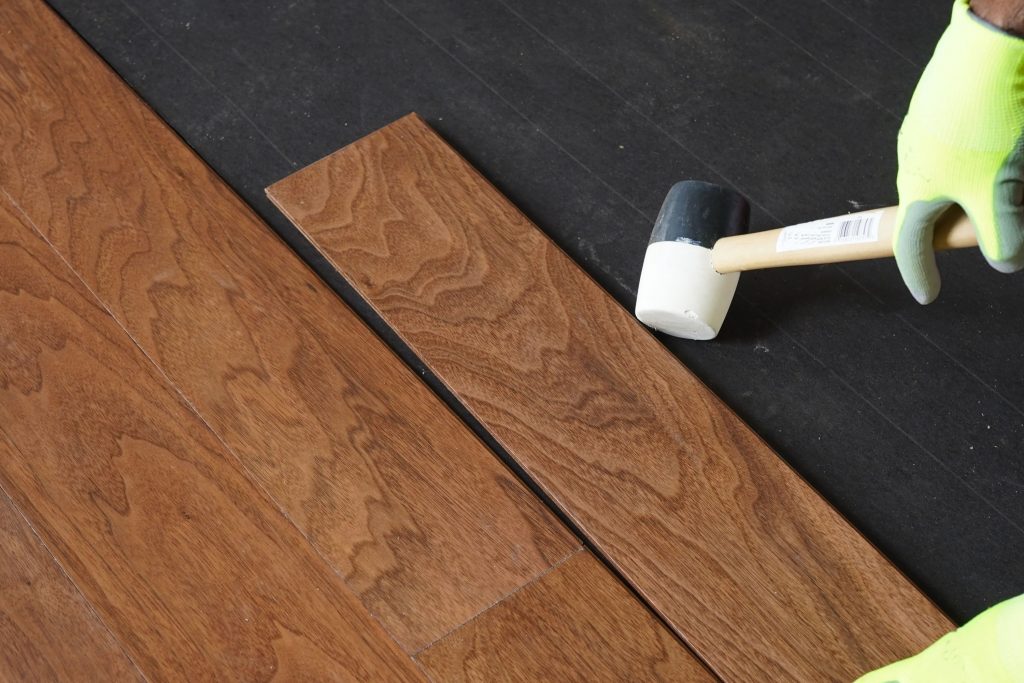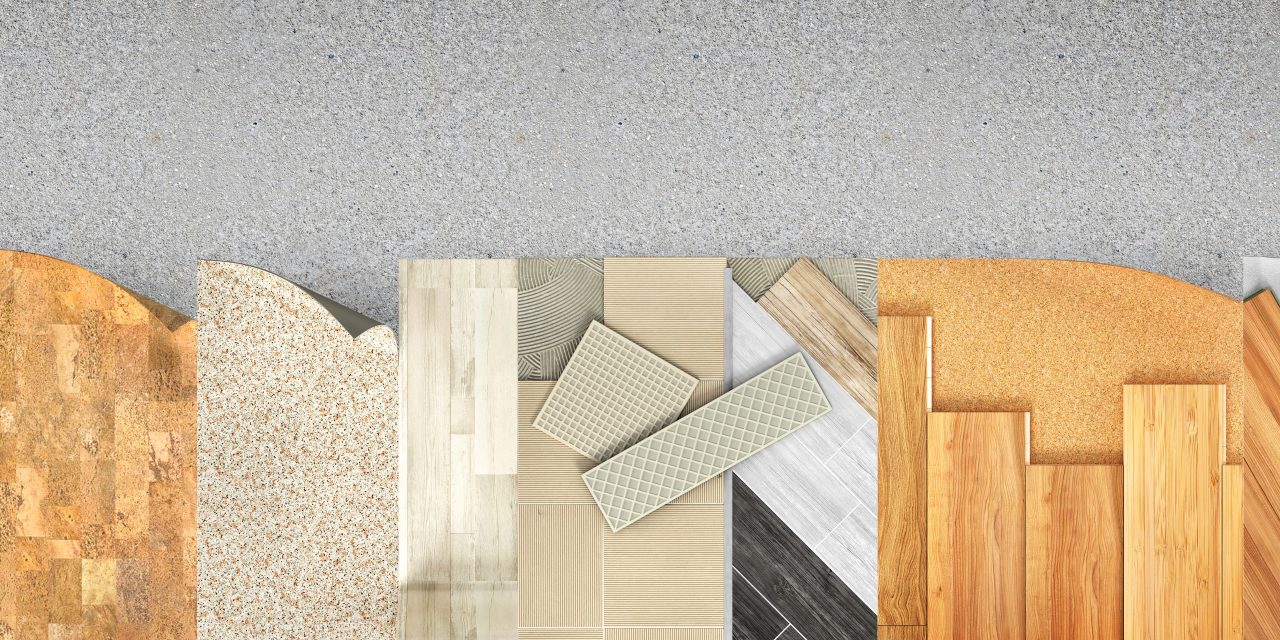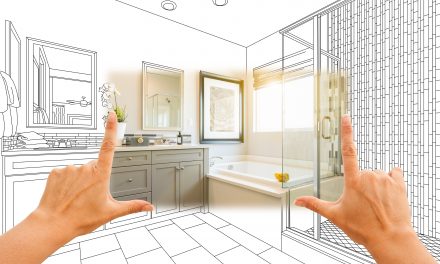Redoing your floors and not sure where to start? We get it. Do you go with hardwood? Carpet? Vinyl? There are endless options when it comes to flooring and we’re here to make things as simple as possible. Check out our solutions for different types of flooring, quick install tips, benefits of each type of flooring and where you can find it.
Hardwood
We’ll start with the most popular type of flooring – hardwood. Hardwood flooring can warm up a room or make it extra stylish and beautiful. But it’s important to know that not all hardwood floors are created equal. There are a lot of things to take into consideration when choosing the color and finish of your flooring, and it can really make a difference.

Quick Install Prep Tips for Hardwood
The first thing you need to do when you decide to install hardwood is to determine what kind of installation you want. Between glue-down, click-lock, nail-down and staple-down boards, there’s a lot of ways you can go. The most popular, and arguably the simplest of methods is the click-lock hardwood.
- Let your new flooring get to know the old flooring.
This might sound silly, but even Bob Vila says it’s important to “give your purchased flooring time to acclimate to the conditions of your space.” (BobVila.com) So bring in all of your flooring and let it rest in its new home for anywhere from one to five days. - Ensure the subfloor is level.
Grab your level, and make sure that the subfloor (the floor on top of which you’ll be placing the new hardwood) is level. Make any adjustments necessary before you start laying any new flooring down. - Plan your attack.
When deciding how and where to lay your flooring, it’s best to lay the planks parallel to the primary source of light.
Benefits of Hardwood
The first and oftentimes most important benefits to hardwood is that it is easy to maintain. Spills and messes can easily be swept or mopped up compared to carpet floors. Hardwood also enhances the look and increases the value of your home. Add that to the fact that it’s durable and is cost-effective, you really can’t beat hardwood.
Ease of Install
We give hardwood a 3 out of 5 on the difficulty scale.

Check out our variety of hardwood floors and see what works best for you and your home!
Carpet
If you’re looking to make your home comfy, cozy and quiet then carpet may be the right choice for you. Carpet is soft and is great for kids that want to roll around and play on the floor. But keep in mind, carpet wear and tear is much more visible and doesn’t last nearly as long as hardwood or vinyl.
Quick Install Prep Tips for Carpet
Take these things into consideration before you start laying your new carpet.
- Install tack strips.
After you’ve removed all the existing flooring and doors from their hinges, the first step is cutting carpet tack strips around the perimeter of the room. Tack strips ensure that carpet stays in place and are vital to the install process. - Install carpet padding.
Carpet padding serves as the foundation for carpet. It helps protect the carpet under which it lays and helps in areas of high traffic and a lot of furniture. Carpet pads are fairly simple to install and require staples.

- Measure and cut the carpet.
When measuring the room to be carpeted, make sure to measure along the longest wall and add a few inches to the measurement to give yourself a little extra room for error.
Benefits of Carpet
Carpet flooring is nearly half the cost of hardwood flooring and can be much more comfortable than hardwood or vinyl. Carpet also can give homes a cozy feel and can make noises seem quieter.
Ease of Carpet
We give carpet a 5 out of 5 on the difficulty scale.

Vinyl
When people think of vinyl, they probably think plastic. And while vinyl is technically plastic, it has the appearance of wood or tile or even stone. Vinyl is waterproof, and therefore can be a great choice for any areas where you might expect a lot of moisture – the bathroom or kitchen for example. Plus, peel-and-stick vinyl has been said to be among the simplest flooring installs available. We like the sound of that
Quick Install Prep Tips for Vinyl
When checking out vinyl for your DIY project, consider peel-and-sick vinyl tiles. Your options on designs and colors may have been limited several years ago, but now you’ll find hundreds of options.
- Sand down high spots.
You can find these spots by using a straightedge. But be aware, sanding is oftentimes a messy undertaking so turn off the furnace or any fans and wear a dust mask. - Trim doorjambs.
When working near the doors, trim the doorjamb a little so that you can simply slide the flooring underneath. You can determine how much trimming needs to be done by first measuring with a piece of excess flooring. - Leave an expansion gap.
Did you know that houses expand? Thermal expansion can and will affect different areas of your home, particularly windows and doors when it gets hot outside. To avoid any over-expansion when this happens, leave a bit of space (about ¼ of an inch to 3/8 of an inch) between the flooring and the walls.
Benefits of Vinyl
First and foremost, vinyl is more cost-effective than some other kinds of flooring. As mentioned earlier, it’s also preferred for higher-traffic areas and areas where significant amounts of moisture are to be expected.

Vinyl flooring is also more durable and comfortable, not to mention it reduces noise (insert kids or pets).
Ease of Install
We give vinyl a 1 out of 5 on the difficulty scale.

Shop our selection of vinyl flooring today and see the difference it can make in your home.
There are so many options available for flooring, just make sure to take into consideration the things that matter most to you – cost, durability, room function, etc. And share your photos with us – we can’t wait to see your DIY project. We’re “floored” to be your choice home improvement store!






